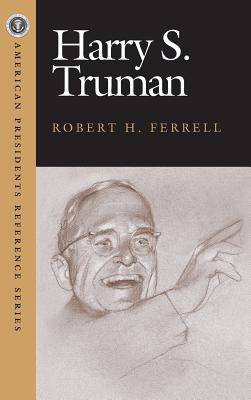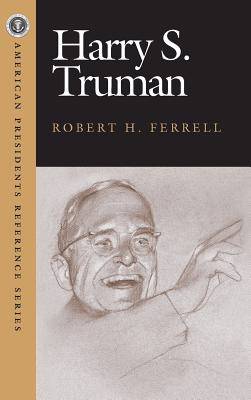
- Afhalen na 1 uur in een winkel met voorraad
- Gratis thuislevering in België vanaf € 30
- Ruim aanbod met 7 miljoen producten
- Afhalen na 1 uur in een winkel met voorraad
- Gratis thuislevering in België vanaf € 30
- Ruim aanbod met 7 miljoen producten
Zoeken
€ 67,95
+ 135 punten
Uitvoering
Omschrijving
Each volume in the new American Presidents Reference Series is organized around an individual presidency and gathers a host of biographical, analytical, and primary source historical material that will analyze the presidency and bring the president, his administration, and his times to life. The series focuses on key moments in U.S. political history as seen through the eyes of the most influential presidents to take the oath of office. Unique headnotes provide the context to data, tables and excerpted primary source documents. Harry Truman was born on May 8, 1884. He served with distinction during World War I as a commander of an artillery battery, and he ultimately attained the rank of major. In 1922, with the support of political boss Tom Pendergast, Truman was elected as a county judge. He lost reelection, but then won again as presiding judge in 1926 and 1930. In 1934 Truman was elected to the U.S. Senate, where he supported President Franklin Roosevelt's New Deal policies and entry into World War II. When Vice President Henry Wallace alienated Democratic Party leaders, Truman was nominated for vice president. On April 12, 1945, eighty-two days into Truman's vice presidency, Roosevelt died in Warm Springs, Georgia. At the age of sixty-one, Truman was sworn in as the thirty-third president of the United States. Key events during the Truman presidency include victory in World War II and Truman's decision to drop atomic bombs on Japan, the start of the cold war with the Soviet Union and its eastern European satellites, the Marshall Plan, the Berlin airlift, the Fair Deal, price-control legislation, and the McCarthy hearings. In March 1952 Truman announced that he would not seek reelection. Harry S. Truman died on December 26, 1972. This new volume on the presidency of Harry S. Truman will cover campaigns, elections, and the Pendergast connection, Senator Truman, particularly his chairmanship of the Special Committee to Investigate the National Defense Program, FDR, World War II, and the atomic bomb decision, Joseph McCarthy, the cold war, and the police action in Korea, civil rights.
Specificaties
Betrokkenen
- Auteur(s):
- Uitgeverij:
Inhoud
- Aantal bladzijden:
- 320
- Taal:
- Engels
- Reeks:
Eigenschappen
- Productcode (EAN):
- 9781568027661
- Verschijningsdatum:
- 21/11/2003
- Uitvoering:
- Hardcover
- Formaat:
- Genaaid
- Afmetingen:
- 153 mm x 236 mm
- Gewicht:
- 603 g

Alleen bij Standaard Boekhandel
+ 135 punten op je klantenkaart van Standaard Boekhandel
Beoordelingen
We publiceren alleen reviews die voldoen aan de voorwaarden voor reviews. Bekijk onze voorwaarden voor reviews.








